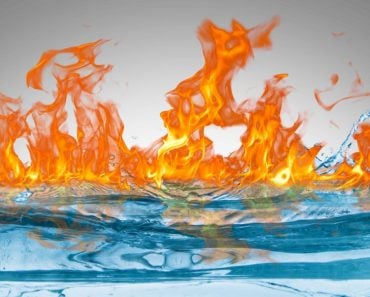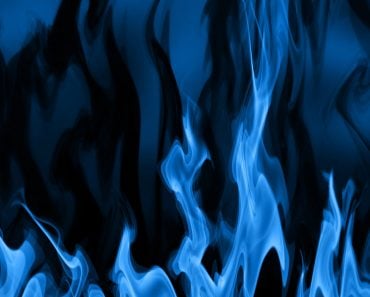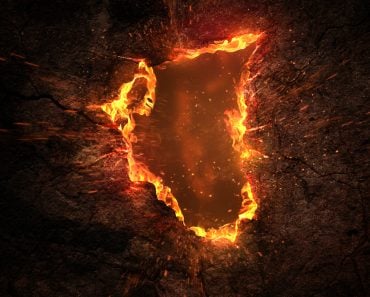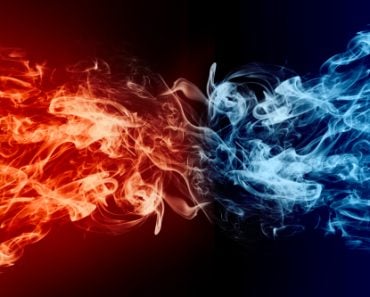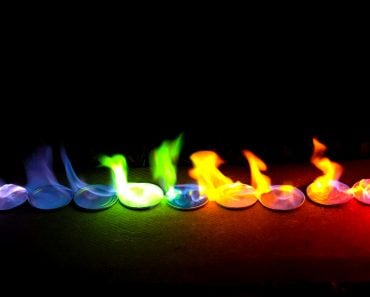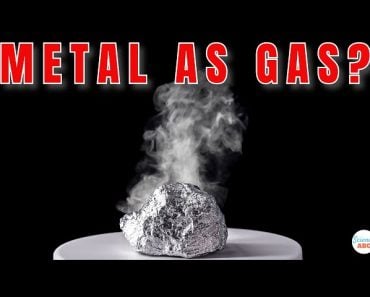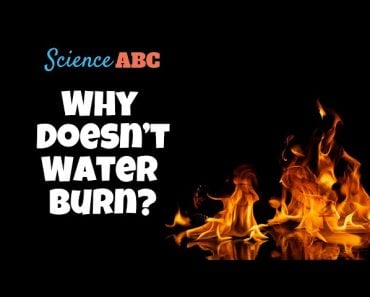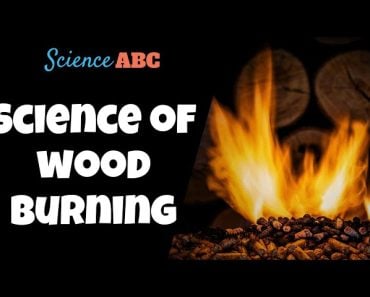Table of Contents (click to expand)
Fire is a chemical reaction that involves the combination of fuel and oxygen. The temperature of a fire can reach up to 1,100 degrees Fahrenheit. Fire can’t melt everything, but it can melt steel which has a melting point of 2,500 degrees Fahrenheit.
There are few things as entrancing as a campfire, or any fire for that matter. They are beautiful and deadly, unpredictable and mysterious. We fear them, create them, douse them and protect against them because there are few forces in the world as destructive. Thousands of acres of forest can burn in a matter of hours or days if the winds are right and the fuel is dry enough.
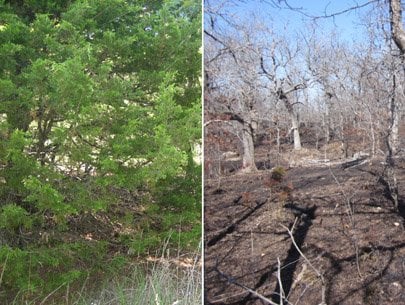
Given how pervasive and universal fire is, it does bring up a common question—is there anything that fire can’t burn or melt?
Recommended Video for you:
Burning Vs Melting
Before we delve into the limitations of fire, we should begin by briefly reviewing the difference between burning and melting; while fire can do both of these things, the processes involved are not the same.
When something is melted, such as an ice cube, it represents a phase change. In other words, ice changes from a solid state of water to a liquid state of water, but the chemical composition of the material itself is not changed. Similarly, when a chocolate bar melts in your bag on a hot day, it shifts from a solid state to a liquid state, but the flavor and basic composition doesn’t change in any way, just the form.
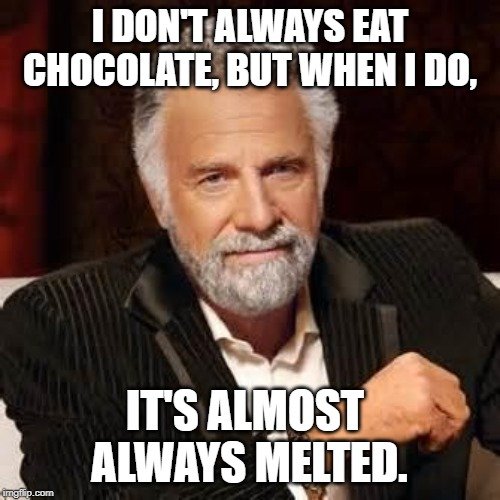 When something burns, however, it represents an oxidizing chemical reaction, where the material being burnt will be chemically altered into other substances with different characteristics. Wood is the most common example of this. Unlike ice or chocolate, wood cannot melt because the combustion temperature is lower than the melting point; a fire would start before the material could change phase to “liquid” wood.
When something burns, however, it represents an oxidizing chemical reaction, where the material being burnt will be chemically altered into other substances with different characteristics. Wood is the most common example of this. Unlike ice or chocolate, wood cannot melt because the combustion temperature is lower than the melting point; a fire would start before the material could change phase to “liquid” wood.
When you throw a log on the fire, the wood begins to heat up until it reaches an ignition point, where the fuel—the hydrocarbons of the wood—can interact with oxygen in the air and ignite, i.e., start to burn. This typically occurs once the wood reaches a temperature of 500 degrees Fahrenheit, although smoke will be released at around 300 degrees Fahrenheit. Smoke consists of hydrogen, carbon and oxygen compounds, including carbon dioxide and other volatile gases. The material left in your fireplace or campfire ring consists of char and ash. Char is essentially pure carbon, and is the basis of charcoal, while ash is composed of the minerals in the wood that cannot be burnt off in the form of gas.
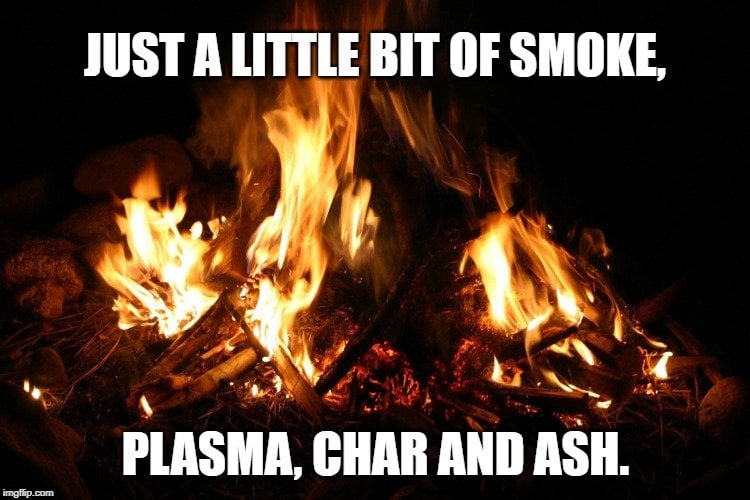 While “fire” itself is a chemical reaction, the visible flames that you see are actually a state of matter known as plasma, in which hot gases are continually reacting and giving off light, because they are still being ionized. The temperature of those gases being given off, and the fire itself, will usually top off at approximately 1,100 degrees Fahrenheit, while the charcoal that burns once the volatile gases are all released will burn at roughly double that temperature—2,000 degrees Fahrenheit.
While “fire” itself is a chemical reaction, the visible flames that you see are actually a state of matter known as plasma, in which hot gases are continually reacting and giving off light, because they are still being ionized. The temperature of those gases being given off, and the fire itself, will usually top off at approximately 1,100 degrees Fahrenheit, while the charcoal that burns once the volatile gases are all released will burn at roughly double that temperature—2,000 degrees Fahrenheit.
What Can Fire Not Affect?
While 2,000 degrees Fahrenheit is incredibly hot, and very dangerous, there are many substances with combustion points higher than that temperature. On average, most house fires will burn between 1,000 and 2,000 degrees Fahrenheit, so there are plenty of things in your house that wouldn’t be consumed.
Your jewelry, for example, which may be made of gold and silver, have melting points of 1,950 degrees and 1,700 degrees, respectively, while your diamonds are completely safe, having a melting point of 6,000 degrees. Most precious gemstones are similarly high in terms of their melting point. Steel has a melting point of approximately 2,500 degrees Fahrenheit, so most of your tools and cookware would survive a normal house fire, as would most of the tools in your garage.
However, we have only been considering a normal fire, one that is burning primarily carbon-based fuels/objects with low combustion temperatures. It is difficult to create a fire that burns hotter than this, but far from impossible. If you run a current of electricity through a gas, it will plasmize, similar to what occurs in the colorful flames above a fire, but the temperature of those gases can rise to temperatures of 36,000 degrees Fahrenheit. Such intense levels of concentrated heat are seen in plasma arc welding and other related fields. That temperature should be able to melt just about anything, but it won’t necessarily cause everything to “burn”.
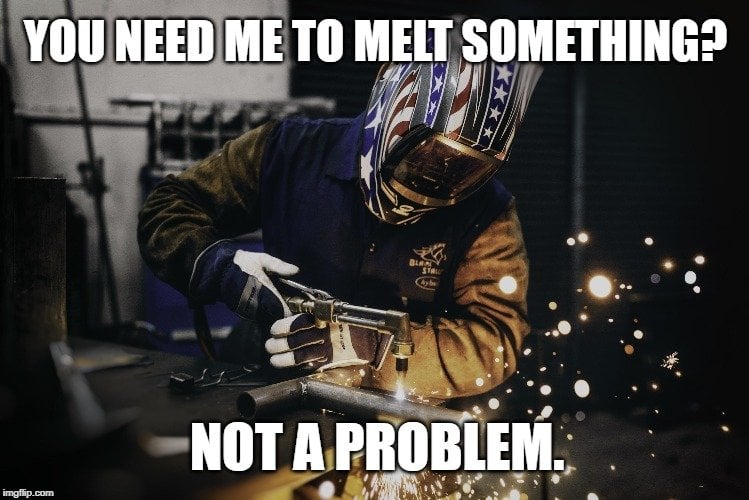
The question of what things can’t “burn” is somewhat vague, as combustion reactions, i.e., burning, are typically classified as reactions involving hydrocarbons and oxygen. Some materials have inherent structural or chemical obstacles to combusting in the presence of oxygen, and some other materials have no hydrogen present to burn. That being said, oxygen isn’t the only gas that can result in an exothermic reaction. Studies have found that fluorine, nitrogen and carbon dioxide can all support combustion reactions of less common materials when conditions are correct.
If you are trying to find something that will never burn, the noble gases are an excellent example. They are “satisfied” with their present structures, and are fully content to be non-reactive, particularly in terms of combustion. They may react when stressed in extreme circumstances, but would never actually “burn” by the standard definition.
A Final Word
Fire should always be taken seriously, as it has such destructive potential, but it is good to know the limitations of those reactions, as well as the basic components to create one. Despite the inherent dangers, humans are still fascinated by fire, and drawn to push its limits. A few years ago, researchers created the most fire-resistant material in history, or at least the one with the highest melting point. A particular combination of carbon, nitrogen and hafnium has a melting point of 7,460 degrees Fahrenheit.

References (click to expand)
- Fire behaviour - Science Learning Hub. sciencelearn.org.nz
- Fireproofing - Wikipedia. Wikipedia
- New material has higher melting point than any known .... ASM International
- Things that Won't Burn in a House Fire - Ally1 Disaster Solutions. ally1disastersolutions.com
- What Is Fire? - How Fire Works - Science | HowStuffWorks. HowStuffWorks


